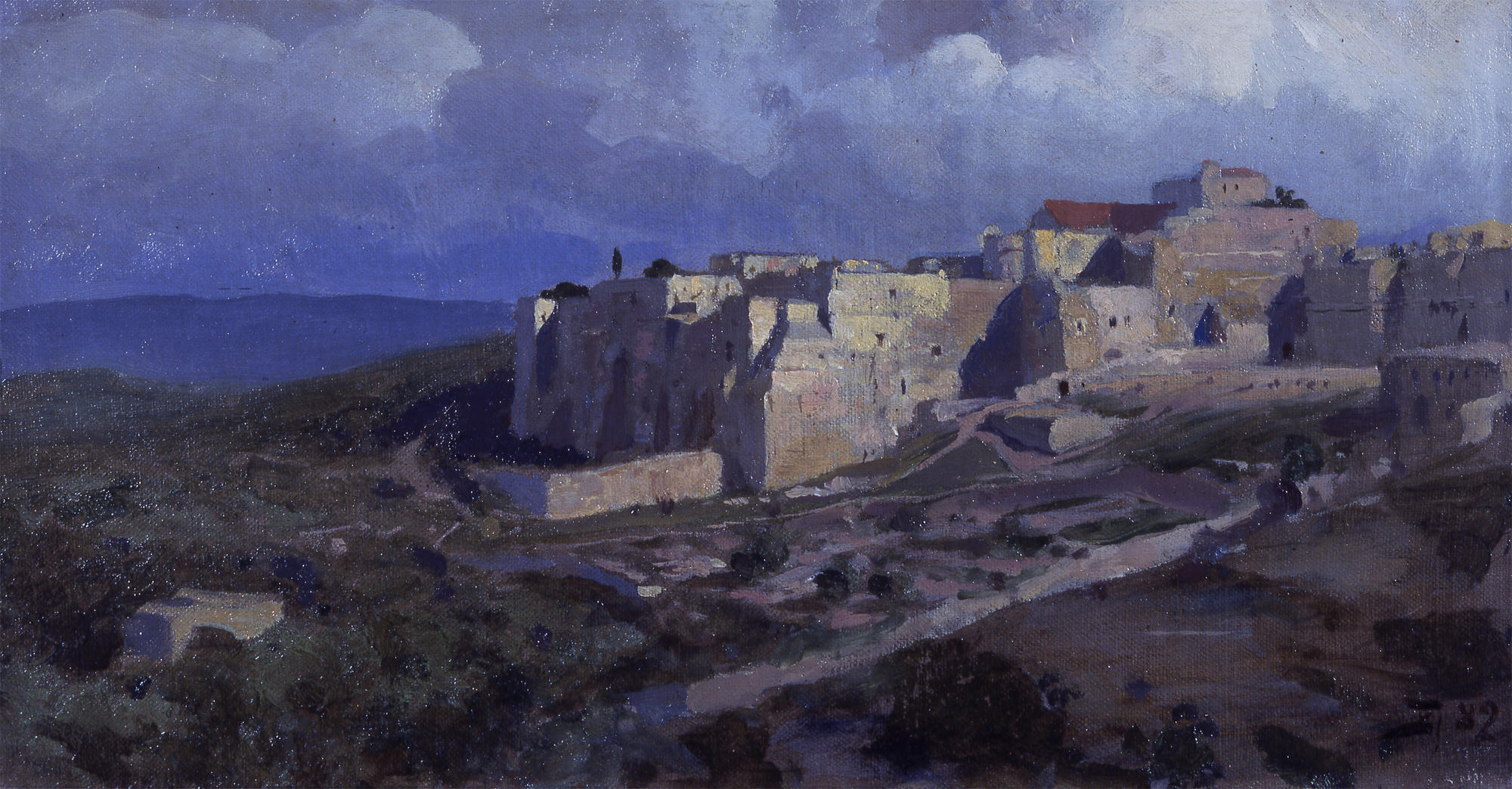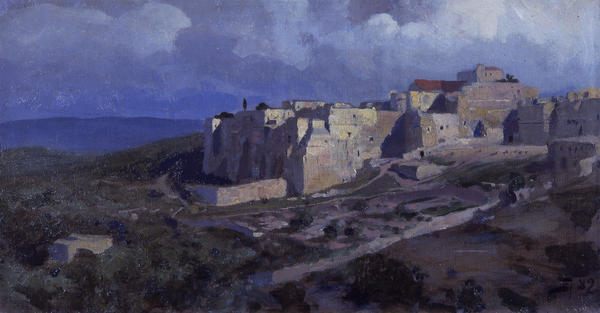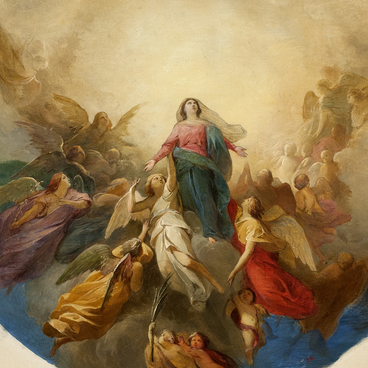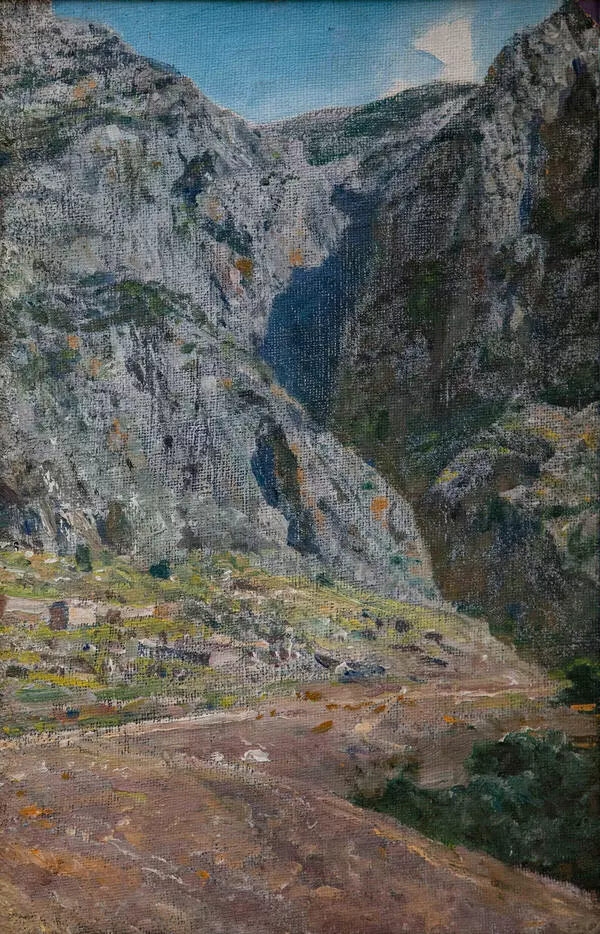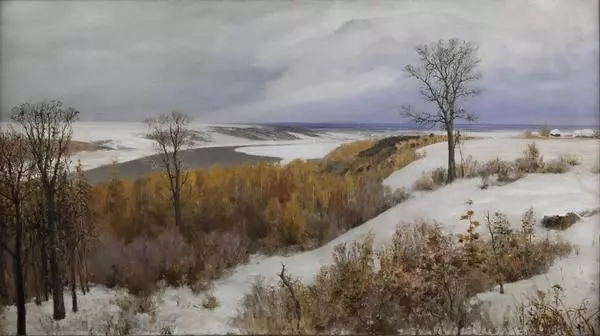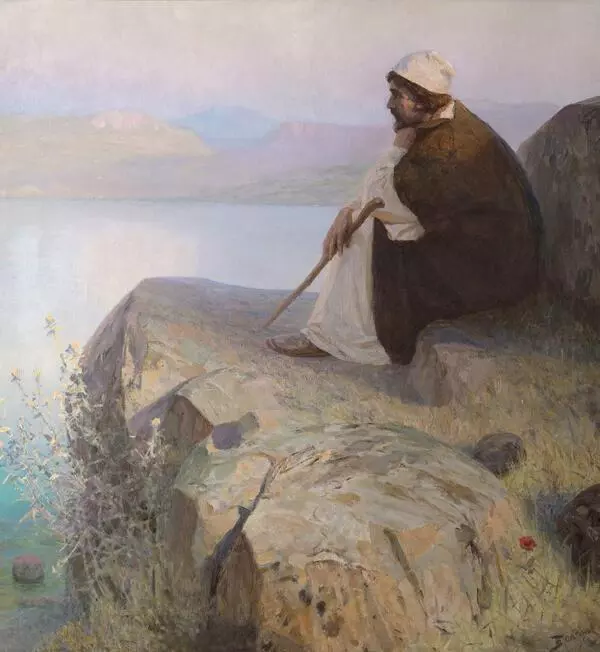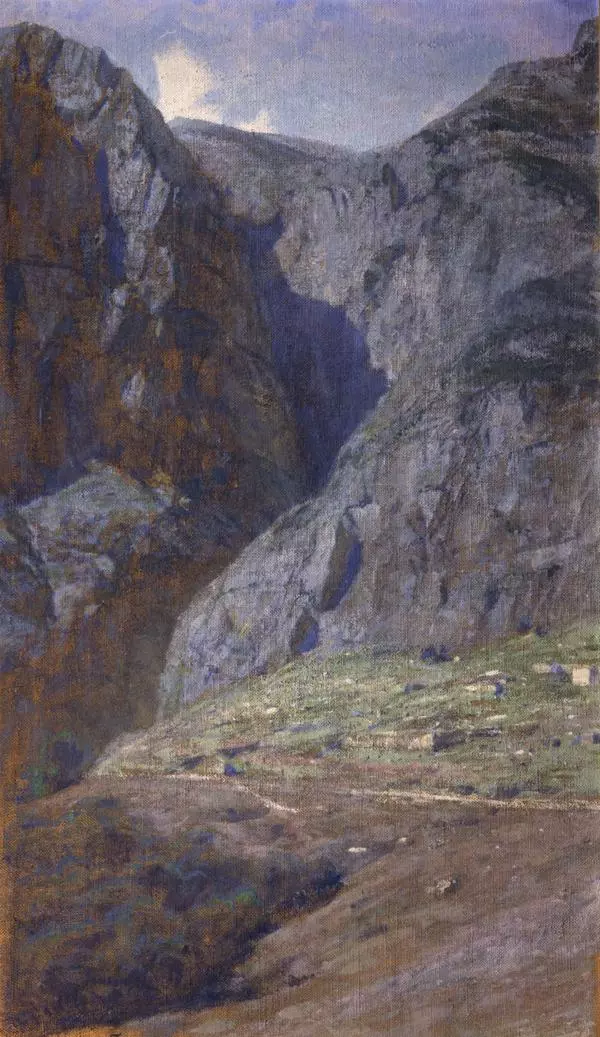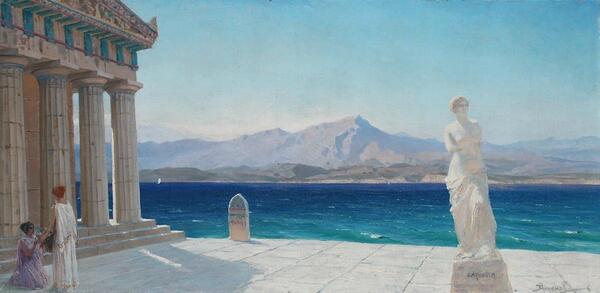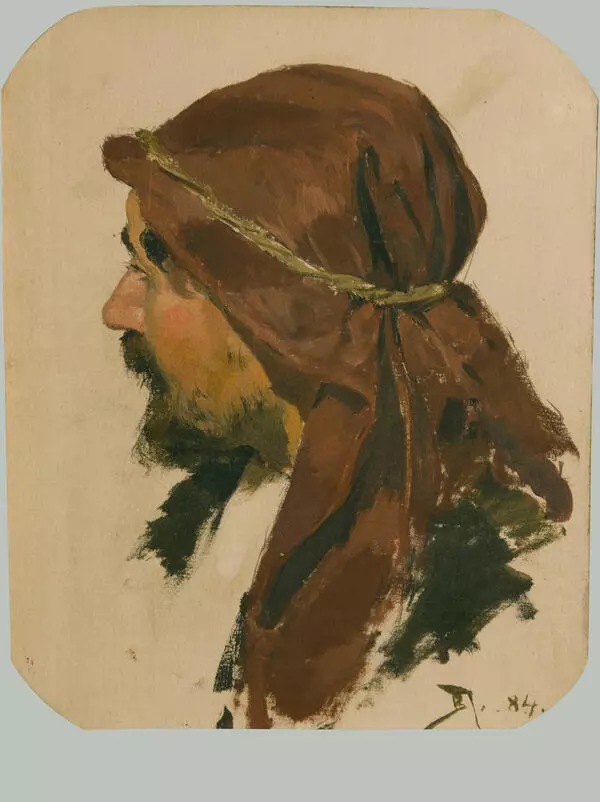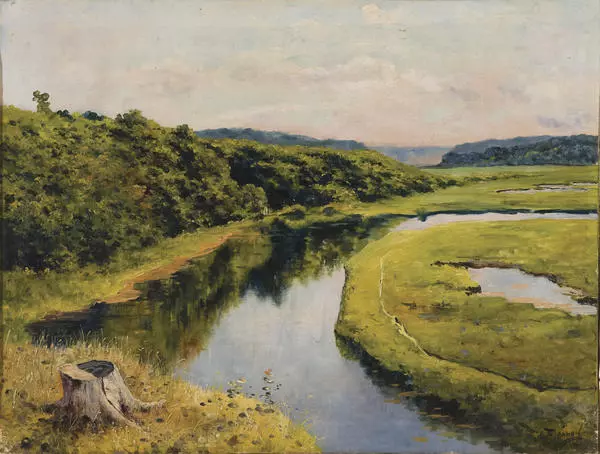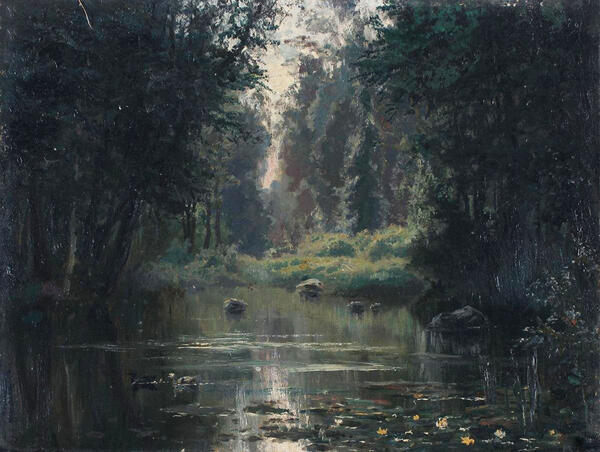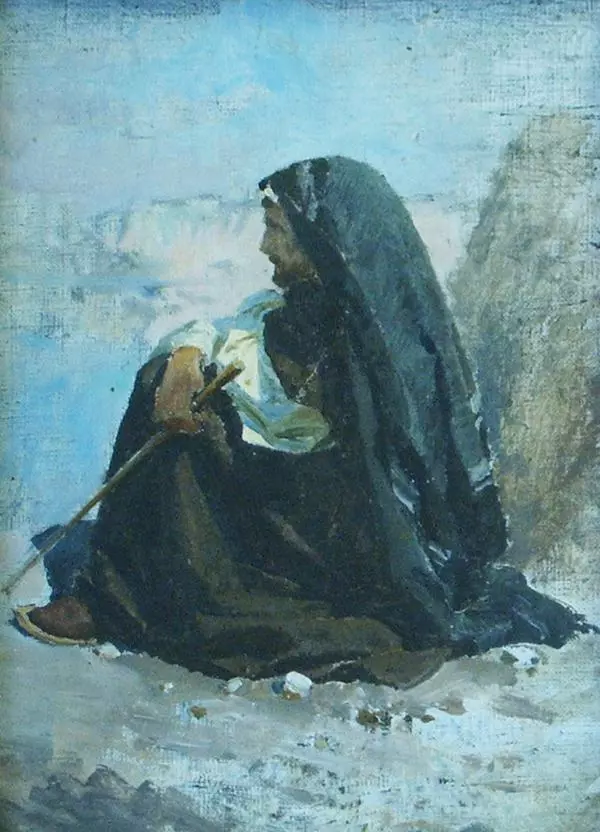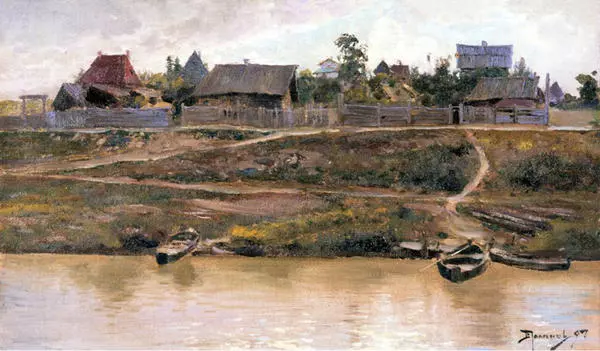Vasily Dmitrievich Polenov was broadly acclaimed by his contemporaries as a talented landscaper. In 1881–1882, the artist travelled to the Middle East to collect materials for his new picture Christ and the sinner. On tour he visited Egypt, Syria, Palestine and made a multitude of sketches and studies depicting views of those countries. In 1885, the cycle of his Middle East studies was shown at the 13th Itinerant Exhibition and was unanimously and highly appreciated by critics. A critic, Vladimir Vasilyevich Stasov, described those pieces as ‘a huge number of the most interesting and most talented scenes’.
The studies Polenov brought from the tour were distinguished by fresh colours and bold painting. Many of his colleagues were surprised by the new understanding of colour and portrayal of his general immediate experiences from nature. His scenery layout, his ability to show nature in the best possible light were characteristic of a number of pieces of his Middle East cycle. Austerity and solemnity are inherent in his Palestinian study Bethlehem. Under the heavy and leaden sky there are ancient structures as if stuck to one another and resembling a fortress with small dim windows. Nature around is severe in its simplicity: the eternal city is located in an undulating plain covered with low grass and occasional bushes. On the yellow-reddish walls there are pink overtones of sun rays breaking through a thick shroud of rain clouds. Sunlight distinctly reveals the buildings’ plain and austere shapes, emphasises their light and flat surfaces and thickens to intense blues tones in shadowy areas.
A clear and rhythmic organisation of space in the picture is set by the uniform geometry of buildings combined with sculptural freedom of the painting in the foreground, as well as by the sequence of dark and light views. The small study sounds like a piece of monumental art due to its solid picturesque mass, deep intense tones and expressive light contrasts. The characteristic feature of Bethlehem is that there is no meticulous precision of working with details there. The novelty of his solution in this study and artistic nonchalance of its performance make this study especially expressive and rank it with the best landscapes of the artist. Polenov’s mastery, his command of open air painting techniques makes the piece extremely expressive.
